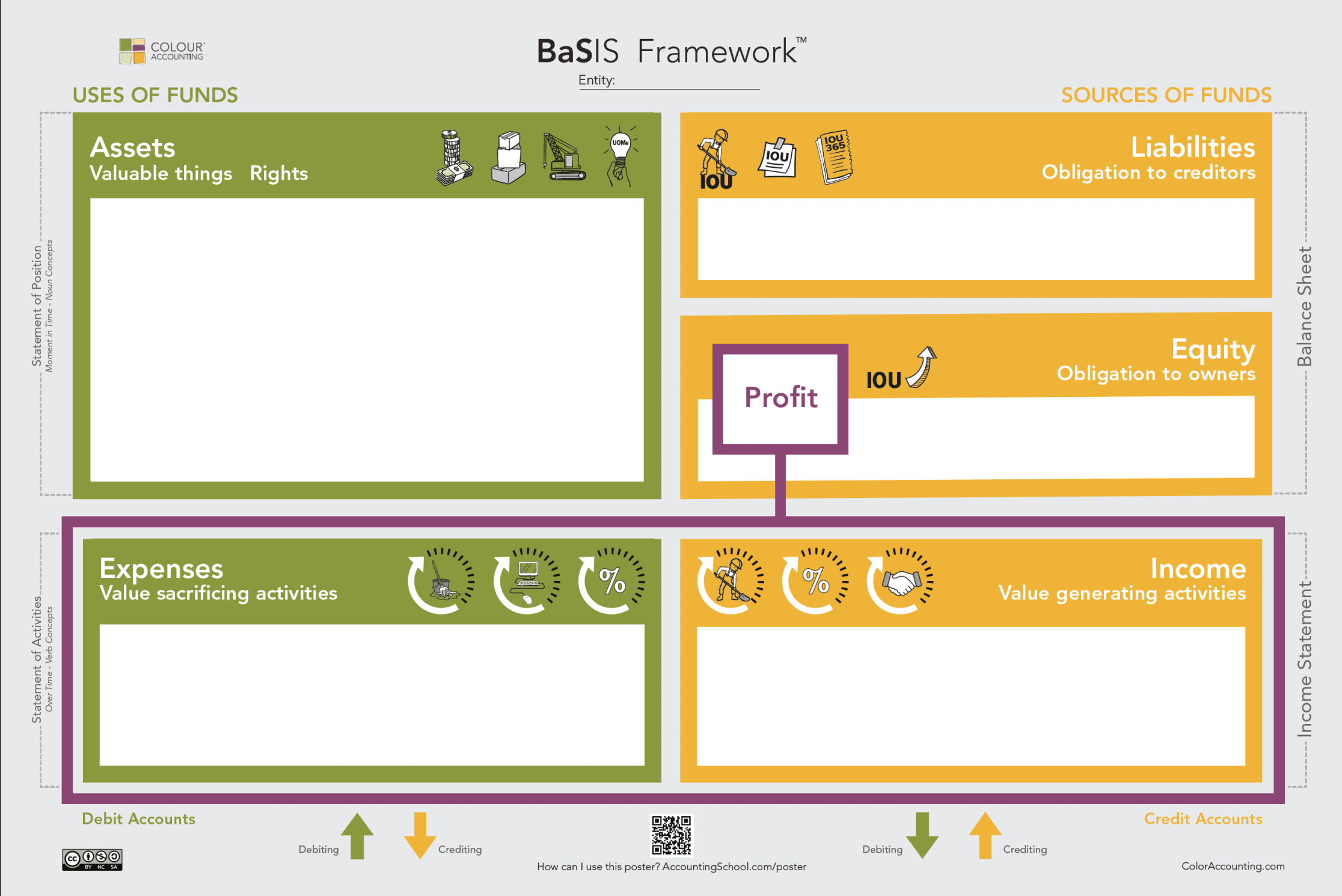Why concept mapping is important
Posted by Toby York. Last updated: April 28, 2025
A version of this article was first published on LinkedIn on 30 July 2020.
Concept maps are visual representations of information that show everything in a single view. They help students to create a clear mental model, which clarifies their thoughts and provides a shared language of understanding in a community of learners.
Concept maps are effective when it is important to understand relationships between different things. So they are perfectly suited to accounting education. They also work well for all types of students.
According to the educational psychologist David Ausubel, the single most important factor influencing learning is what the learner already knows1. A concept map accommodates this and supports Ausubel’s idea of “meaningful learning”, that is, when the student comprehends the relationship of what is being learned to other knowledge.
Concept maps generally start with higher-level concepts, so help students to create schema for learning. Schema enhance learning by showing students:
- The context of what they already know.
- How new information fits with what they already know.
- How new bits of information fit together.
A concept map for accounting
Traditional concept maps consist of circles or boxes (“nodes”) each of which contains a concept and are connected by linking phrases.
Although the BaSIS Board is not a traditional concept map in that sense, like all effective concept maps, it has intellectual integrity––although it might look simple, it is not simplistic and it accurately reflects how the things it represents behave in practice.

Good concept maps are so rigorous that no matter how complex the example you throw at it, the model still works. This is also true of the BaSIS Framework.
Here are some of the many benefits that this conceptual map for accounting can provide:
- By showing everything—the forest and the trees—students have a concept map of the accounting framework in a single view.
- The duality of accounting—assets are equivalent to liabilities plus equity—is obvious.
- The use of colour accelerates learning of debits and credits. It may be common for students to muddle debits for credits, but unusual for them to muddle orange for green.
- Students learn quickly that debits and credits can increase or decrease amounts, depending on context.
- It is clear that profit is a function of income and expenses and it is part of equity. The statement of profit and loss and the statement of financial position are part of the same story.
Significantly, concept mapping in accounting education helps to create a common visual language within a community of learners. It provides a solid reference point throughout the student’s learning journey. It provides “pointability” for teachers and students alike.
© AccountingCafe.org
Further reading
Miller, F. (2018) Organising Knowledge with Multi-level Content: Making knowledge easier to understand, remember and communicate. Available at: https://www.francismiller.com/organising-knowledge/ (Accessed 21 October 2022)
York, T. (2021) Concept maps in Accounting Education. Available at: https://accountingcafe.org/2021/05/15/concept-maps-in-accounting-education/ (Accessed 21 October 2022)
References
[1] Ausubel, D. (1968) Educational Psychology: A Cognitive View. Canada: Holt, Rinehart & Winston
[2] Australian Society for Evidence Based Teaching, (2019) Meta-Analytic Research on Concept Mapping. Accessed 28 April 2025.
[3] The BaSIS Framework is a trademark of Color Accounting International



